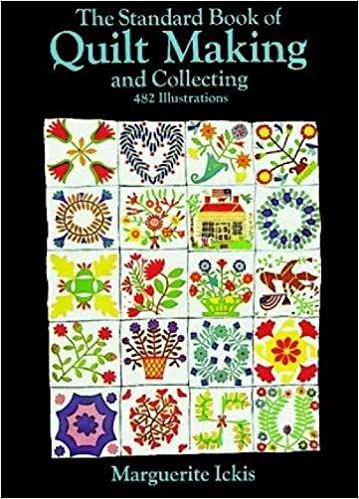But I am like an olive tree
flourishing in the house of God;
I trust in God’s unfailing love
for ever and ever.
~ Psalm 52:8 NIV
Monthly Archives: April 2023
Obstacles that Quilters Face
Quilting is a joy, right? Yes, but maybe not all the time. What gets in the way of quilting joy?
The price of fabric and supplies. Thirty years ago, there was a Ben Franklin craft store in the next town that sold the most beautiful 100% cotton designer fabrics for $5 or $6 a yard. Now, basic ordinary quilting fabric starts at $8 a yard, with the good stuff $12 on up. Just buying the fabric for a bed quilt top can run you over $100, and that’s before you even start working. Then there’s batting, backing fabric, thread, needles, bobbins, and other essential accessories. If you’re making quilts for your family and friends, it’s an expensive proposition. If you’re making quilts to put food on the table, you’ll need customers who afford to pay for your time + materials, often amounting to hundreds of dollars for just one quilt. Ways to lower your costs are to take advantage of sales and store coupons, haunt estate sales and yard sales, or repurpose cotton shirts and linens from your closet or from thrift stores.
Underestimating the amount of fabric you need. Most of the time, printed directions give you the right amounts or even a little extra. But maybe you’re making a different size than the directions are for, or you’re making some design changes, or you’ve come up with your own design, or you’re using odds and ends from your stash and thought you had enough. Is there anything sadder than realizing you really need about 3/8 of a yard more of the yellow fabric? You go back to the store and they no longer have the same fabric, and you either have to make do with the closest approximation, buy all new fabric, or ditch the project. When calculating how much fabric you need, channel your high school geometry. Make drawings and cutting diagrams before you buy or cut. I almost always buy a little more fabric than I think I need, because I love scrap quilts and if I live long enough, any extra fabric will eventually get used.
Improper cutting. That old carpenter’s adage is good advice: measure twice, cut once. The cutting stage is probably the slowest part of my quilting process. But back in the day when I first started quilting, it took even longer. We didn’t have rotary cutters. We had to make templates out of cardboard, trace outlines on the fabric, and cut with scissors. (If you do appliqué or piece curves, you might still do that, unless you have one of those new-fangled Accuquilt or ScanNCut machines.) I do as much strip-piecing as I can, and I always double-check my ruler line before I cut, but mistakes happen. That’s why I always buy a little extra fabric.
Inconsistency of seams. The standard seam allowance for pieced quilts is a quarter of an inch. If your sewing machine didn’t come with a quarter-inch foot, it’s a good idea to buy one. Just a little inattention and deviation can cause distortion problems. (Secret confession: don’t tell my grandbabies, but one of them will be getting a quilt that is ¾” bigger on the bottom edge than the top edge, resulting in some unfortunately bubbly quilting.)
Machines that don’t work well. My first sewing machine was a hand-me-down from my mother. I never got it serviced, and it jammed a lot. I replaced it with a very inexpensive machine, serviced it once or twice, but was very stingy about replacing needles, and had lots of trouble with thread jams. I joined a guild in the 1990s, and my friends were all buying special domestic machines for quilting that cost $5000 or more. I couldn’t afford those, but I bought a Pfaff for $1800 that I still use for sewing and quilting. I get it serviced every couple of years and put on a new needle for each new quilt. My advice: buy the best machine you can and have it serviced regularly. Change your needle more often than you think you should need to.
Acquiring quilting skill. Learning how to quilt takes time and deliberate practice. When I started quilting (in the early 1980s), there was essentially one quilting book, The Standard Book of Quilt Making and Collecting by Marguerite Ickis, published in 1949. I read that book cover to cover, but I never got anywhere until I took a class with a friend. My intention was to make a baby quilt for my second child. (That quilt is still unfinished, half-quilted by hand, tucked away in a box in the laundry room until I feel guilty enough to work on it.) But I still didn’t really get anywhere until I joined a chapter of the Arizona Quilters Guild around 1990. Everyone in the group mentored the new quilters and shared ideas and techniques. If you’ve never had any quilting training, I suggest you take a class at a shop or through a community adult education outlet or online; and/or watch YouTube videos (for piecing designs, I especially like Teresa Down Under; for free-motion quilting, I like Angela Walters; and there are millions of others); and join a local guild—even if you’re a beginner. And don’t let fear of failure keep you from trying new things. It’s a given that you’re going to make some big goofs. That’s okay! Jump in and try and try again.
Quilting in a vacuum. Any activity is more fun when you do it with others. Plus, other quilters will teach you things you didn’t know, and they will inspire you. You need your quilting peeps. Join a guild or a church quilting group to start building your community.
Now it’s your turn. Have you run up against any obstacles in your own quilting life? How did you overcome them? Are you up against anything I haven’t mentioned or addressed? Do you have any quilting-related questions? I am not an expert quilter or quilting expert, but I know where to find answers and I can research them for you for a future post. Share your quilting challenges, successes, tips, and questions in the comments below. I love hearing from you.
NaPoWriMo 2023 Day 29
Today’s prompt is to write your own two-part poem that focuses on a food or type of meal. At some point in the poem, describe the food or meal as if it were a specific kind of person. Give the food/meal at least one line of spoken dialogue.
The Quintessential Movie Theater Treat by ARHuelsenbeck I. once you’ve paid for your ticket move to the concession stand and choose your popcorn it’s calling your name not with words but with its irresistible aroma— (you know you want me you must have me) choose buttered or un- (who eats unbuttered popcorn, crazy people?) salted or un- (are you kidding me? unsalted popcorn?) small, medium, large, or gargantuan (almost the price of a bicycle) but you must have it can’t watch a movie without it II. fresh popped corn at home a marvel of modern technology 3 minutes in the microwave—presto! pop-o! before microwave ovens, hot air machines blew the fluffy little clouds into your bowl before hot air machines Jiffy Pop expanded under aluminum foil on your stove before Jiffy Pop kernels in oil in a lidded pot on the stove or maybe you cooked the kernels in a closed metal mesh basket on a metal pole with wooden handles over a flame in the fireplace
Creative Juice #341

Lots of art in this group of articles.
- Lovely quilts.
- Interesting sculptures.
- A daughter remembers her father.
- Prize-winning photographs.
- The Devil’s Ladder.
- Habits that raise your general intelligence.
- Life Advice from 20 different sources.
- Workers who build multi-million dollar homes in Montana can’t afford to live within commuting distance, so they live in homeless shelters or in their cars until they can afford a little RV. Housing inequity is coming to your state, too. Maybe it’s already here.
- Watercolor lettering. Smitha makes it look so easy. My past attempts have not turned out so great. I noticed in the video that she doesn’t obsess about each letter. She just paints it and goes on to the next. Maybe it’s her brush. Yes, I ordered it. We’ll see if it does the trick.
- The fabulous Alice Hendon, who is the Admin for the tangle Facebook group I belong to, has a new book out, featuring artwork from members of the group. See the review here.
- Artist Clare Youngs’ Instagram page.
- I love Suhita Shirodkar’s sketches.
Video of the Week: Lang Lang and Yuja Wang as Teens
Wordless Wednesday/Flower of the Day: Blue Bells
Review of The Politics Industry by Katherine M. Gehl and Michael E. Porter
I don’t usually post stuff of a political nature here, but this is important.
The last decade or so, I’ve been increasingly disillusioned by the way major candidates are chosen in United States national elections. It seems no one has a chance of winning unless he/she is the nominee of the Republican or the Democratic party. And also the party promotes not the best candidate, but the one who has the best chance of beating his/her opponent.
Before the 2016 election, the Republicans had a huge field of candidates, all of whom bowed out under pressure from the party to defer to Trump (although several would have made a better president). Similarly, in 2020, numerous candidates for the Democrats were weeded out to promote Biden (though some might have been more effective as chief executive).
It feels like we hardly get a choice. Most often, we’re stuck voting for the lesser evil of two unfavorite nominees.
And each new Congress, instead of implementing and improving legislation, repeals and replaces the work of the last Congress, or worse—produces gridlock and inaction.
We’re stuck. How do we get out of this rut?
In The Politics Industry, which was published in 2020, Gehl and Porter promote two innovations that they believe will improve out elections system. They call the book “a road map for breaking partisan gridlock and saving our democracy.”
The first innovation involves primaries and is called Final-Five Voting. Instead of voting for one of your party’s pool of candidates, what if you got to consider everyone who’s running, regardless of party affiliation? Lots of Americans vote for candidates as opposed to party, meaning that they choose the person whom they feel will have the most positive impact on our country, regardless of whether they are blue, red, green, or whatever. Final-Five primaries are non-partisan open primaries that send the top five finishers to the general election.
Final-Five Voting nullifies both the spoiler effect and the wasted-vote argument that discourage competitors from within the major parties and outside of them from running. Five slots ensure a broader slate of candidates, allowing candidates typically eliminated upstream in party primaries to make their case to the general electorate. The media is motivated to cover all five candidates with all-important “earned media” because each candidate has a potential impact on the outcome.
The second innovation involves the general election and is called Ranked-Choice Voting. One of the problems with our current system is that the winner often has less than 50% of the popular vote. In ranked choice voting, the candidate must pass the 50% threshold. How can that happen, especially with five names on the ballot? With five candidates, it’s more likely that you will see one whom you can wholeheartedly support.
Under Ranked-Choice Voting, when you cast your ballot, you rank the five candidates, indicating your first choice, second choice etc. After the polls close, the first-place votes are counted. If one candidate receives more than 50% of the first-place votes (a true majority), the election is over. If no candidate gets a true majority (50% + 1), the candidate in last place is eliminated. But the votes cast for the last-place candidate get transferred to the voters’ second-choice candidates. And so on until a true majority winner is chosen.
States have the power to set their own election policies. In 2018, Maine became the first state in to adopt Ranked-Choice Voting for national elections. Alaska adopted it in 2020 and employed it in the 2022 midterm elections. Several cities, such as Minneapolis and San Francisco, also use RCV for municipal elections.
Gehl and Porter predict that adoption of these two innovations will unlock “the forces of healthy competition in American politics to restore a system that fixes real problems in real people’s lives—more choice, more voice, better results.”
In The Politics Industry, Gehl and Porter discuss how the “duopoly” of our two-party system has in essence become a private industry devoted to eliminating fair competition for elected office. They talk about the two currencies of this industry, votes and money, and how they each manipulate the other.
The Politics Industry is well-written and well-notated. Gehl and Porter thoroughly discuss the problems of our present electoral system and give a history of American political innovations of the past. I won’t try to summarize the whole book, but I want to give you a few more nuggets to think about:
- There are just six paragraphs in the Constitution about how the House and the Senate should work, but the House and the Senate rulebooks have multiple hundreds of pages each—and senators and congresspersons wrote them all.
- Between 1985 and 2015, congressional committee staff who help research issues were cut by 35%, forcing Congress to rely on opportunistic suppliers of data, such as lobbyists.
- Final-Five Voting increases the potential for innovative ideas to become part of the public debate.
- A 2017 evaluation of seven US municipalities using RCV to elect city officials found that candidates focused on the issues of the campaign rather than on denigrating their opponents. (Wouldn’t that be a nice change for the US?)
- There is no independent regulation of the politics industry.
I highly recommend The Politics Industry to every American citizen who is unhappy with the way our government operates. I leave you with one last quote from the book: “We citizens have the power to shift the nature of politics and shape the architecture of our democracy if we can create a widespread understanding of how our political system actually works and galvanize action accordingly.” Gehl and Porter have shown us in this book what ordinary citizens can do to accomplish this shift. Let’s get on with it.
NaPoWriMo 2023 Day 25
Today’s prompt is to write a love poem, one that names at least one flower, contains one parenthetical statement, and in which at least some lines break in unusual places.
Dear Husband by ARHuelsenbeck You are my medical miracle. (You almost died three years ago, but here you are, with us still.) Your ears are unreliable by themselves, but technology helps you hear clearly. Your eyelids, lined with spiky lashes, remind me of a Venus flytrap. I never know when the many medications you take will snap your eyelids closed. You rely on your walker (which you sometimes call your stroller) to get around. Every so often, I catch a glimpse of the impish fellow you used to be, the one who made my face ache with laughing. Thank you for hanging on. I couldn’t bear life without you.
Monday Morning Wisdom #410
NaPoWriMo 2023 Day 24
Today I’m using the Writer’s Digest prompt for Day 23: write a fear poem.
Recurring Nightmare by ARHuelsenbeck I look for my purse and I realize I left it in a store. I retrace my steps and of course it’s not there. My heart pounds. I think of the money and credit cards and identification and keys in my purse and how hard it will be to safeguard or replace them. Crap. I look for someone to help me. Did anyone turn in a lost purse? The store employee is no help at all. I want to go to the bank to cancel my credit cards but I can’t drive there because my keys are in my purse. I want to call someone to come get me but I can’t because my phone is in my purse. What’s the matter with me? Why did I put my purse down? Idiot! I start walking, but why? I’m miles away from home. Too far to walk. What do I do now? Terror rises in my throat. I just know someone somewhere is happily maxing out my credit cards. I walk in circles as my panic escalates. I talk to myself and sob. This is a disaster.








